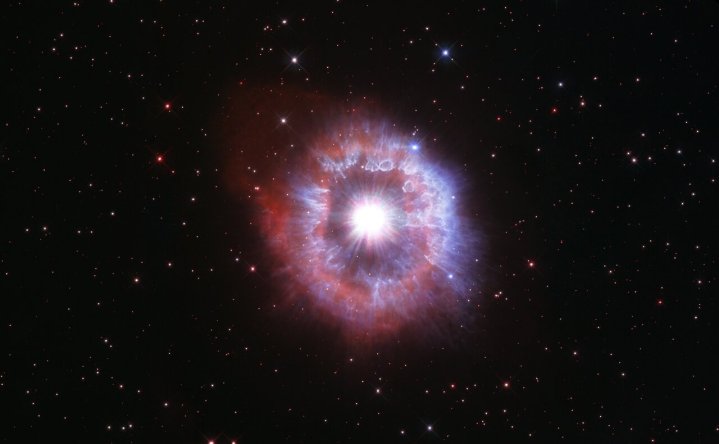
Today is the 31st anniversary of the launch of the Hubble Space Telescope, and to celebrate researchers have used the telescope to image one of the most famous stars in our galaxy. AG Carinae is one of the most luminous stars in the Milky Way, giving out an amount of light equivalent to 1 million suns. But due to the 20,000 light-years of distance and large amount of dust between it and us, it’s usually too faint to be seen with the naked eye.
The star can be seen with telescopes like Hubble though, and studying it can give information about how extreme stars develop as well as capturing a beautiful image. The image uses data from both the visible light and ultraviolet wavelengths, as looking in the ultraviolet range allows scientists to see the dust structures which surround the star in more detail.
As AG Carinae is so bright, it burns a tremendous amount of fuel and is rather unstable. Hubble scientists describe it as “prone to convulsive fits,” in which it puffs up to a larger than usual size and throws off layers of gas into space. These eruptions can throw off a huge amount of material, expelling as much as the equivalent to 10 times the mass of the sun. When one of these enormous puffs happened 10,000 years ago, it created the beautiful shell of dust and gas which gives the star its distinctive appearance.
Stars like this don’t last for long, at least in stellar terms — with a lifespan of a few million years — because they burn through their fuel quickly and die young. The convulsive phase of such a very bright star is called a luminous blue variable, and studying these offers the chance to see stars in extreme conditions.
“I like studying these kinds of stars because I am fascinated by their instability,” said Kerstin Weis, a luminous blue variable expert at Ruhr University in Bochum, Germany, in the Hubble statement. “They are doing something weird.”



